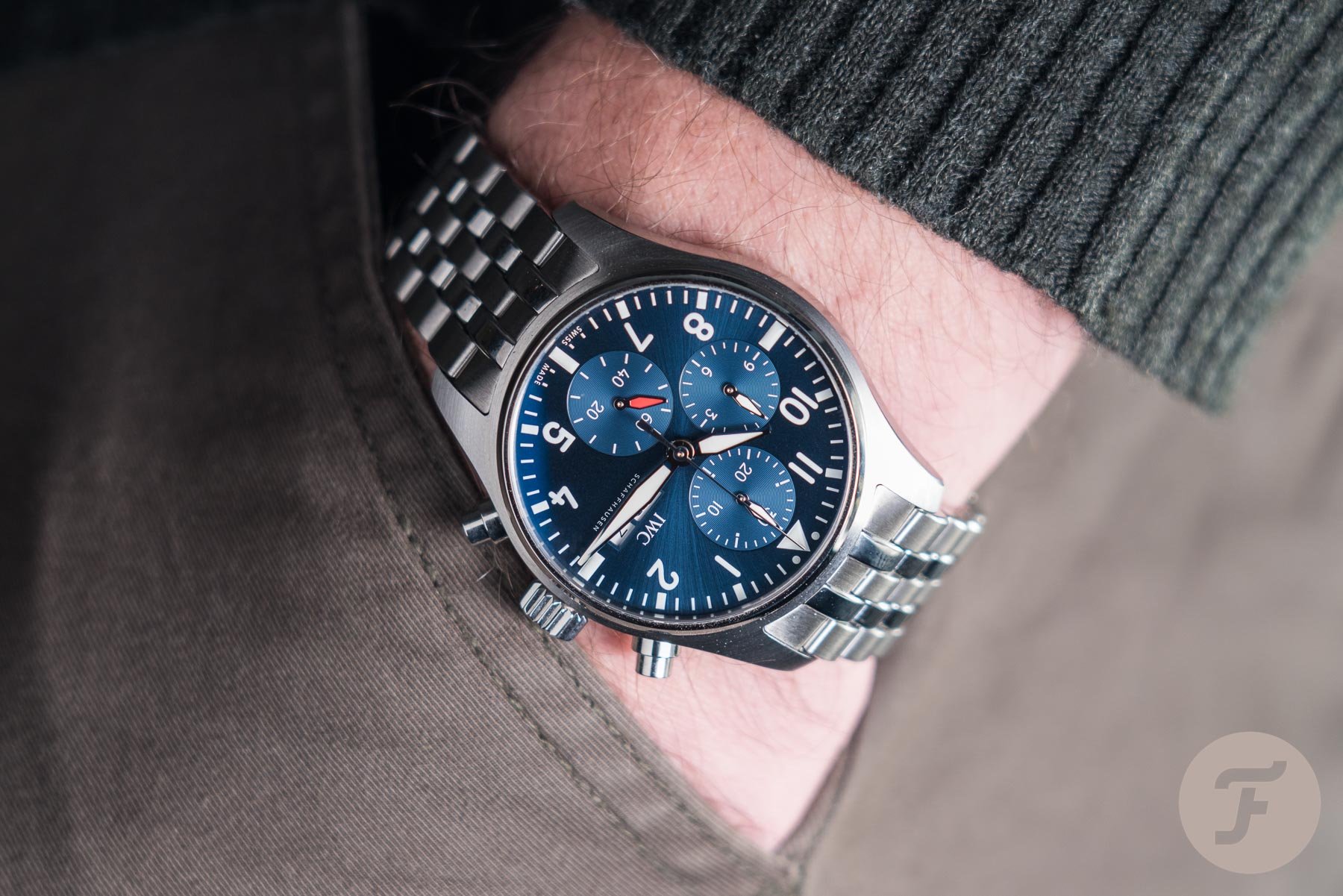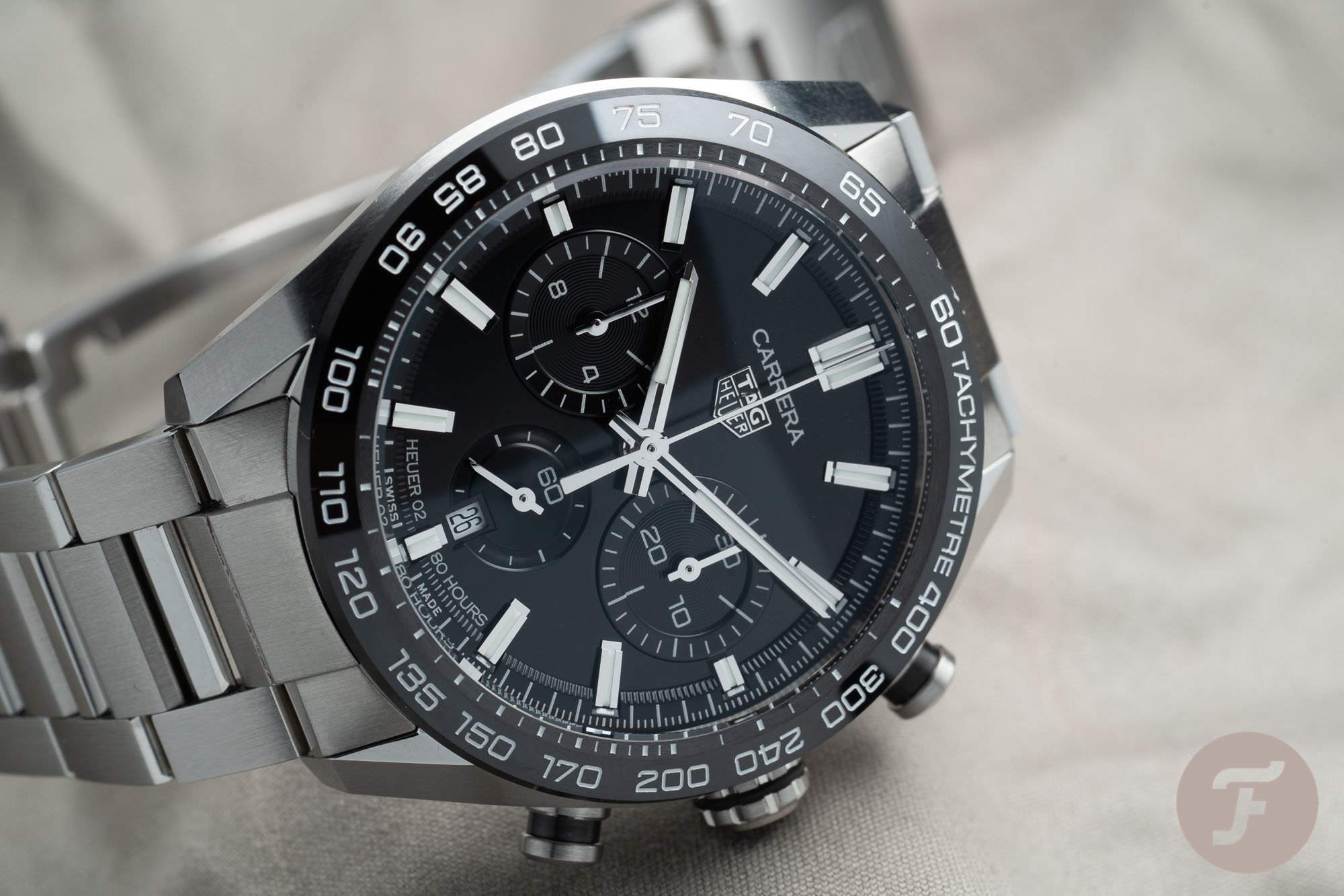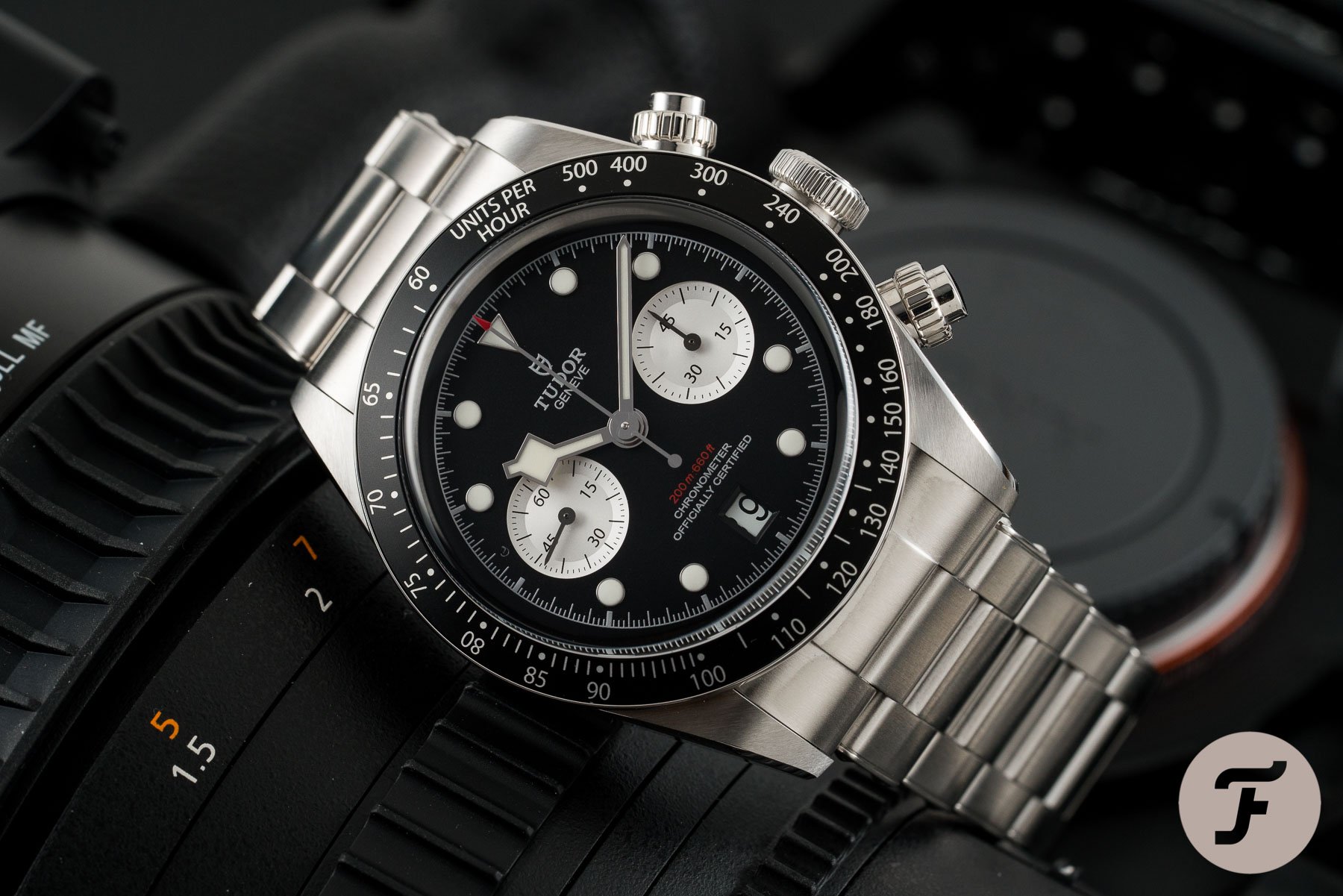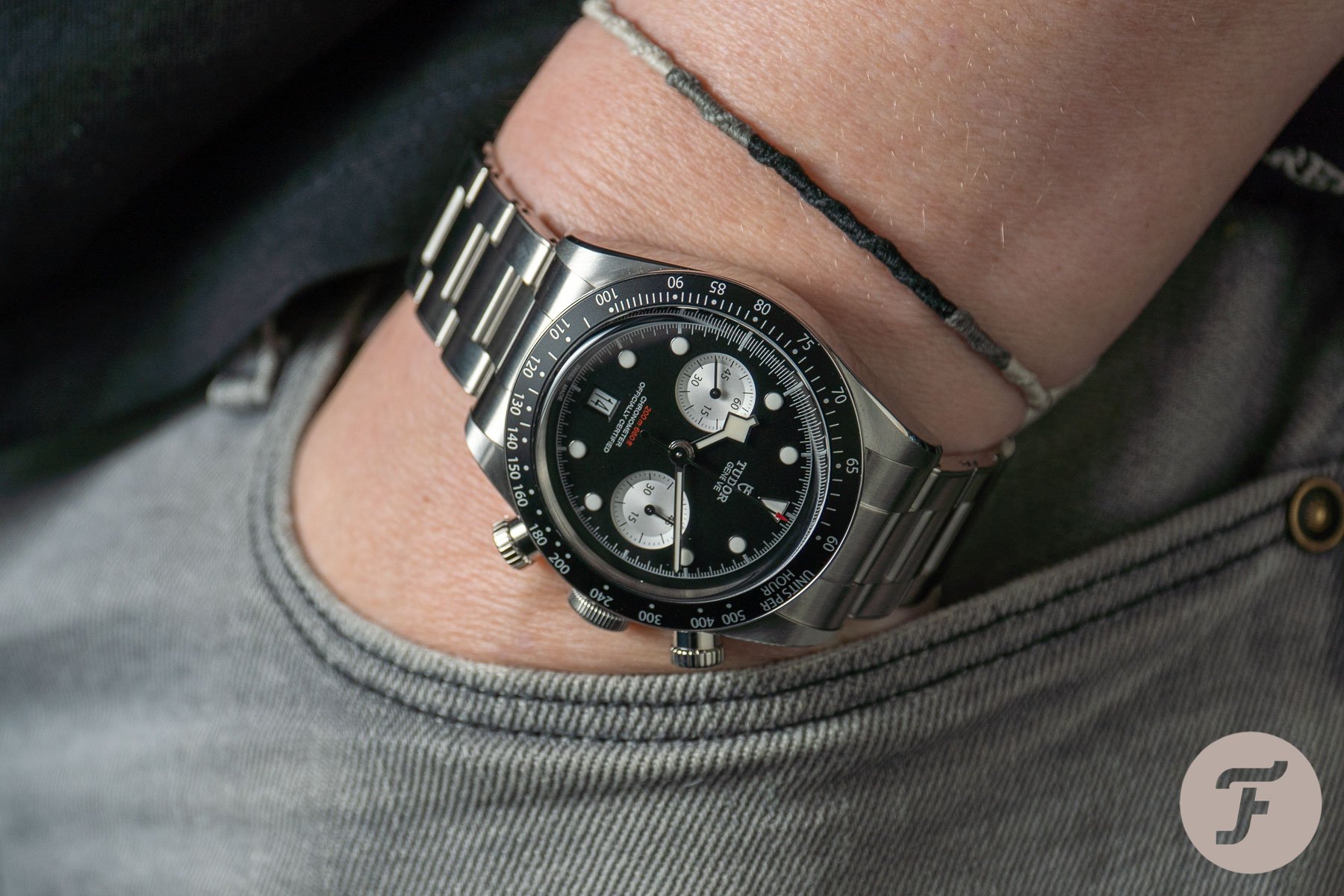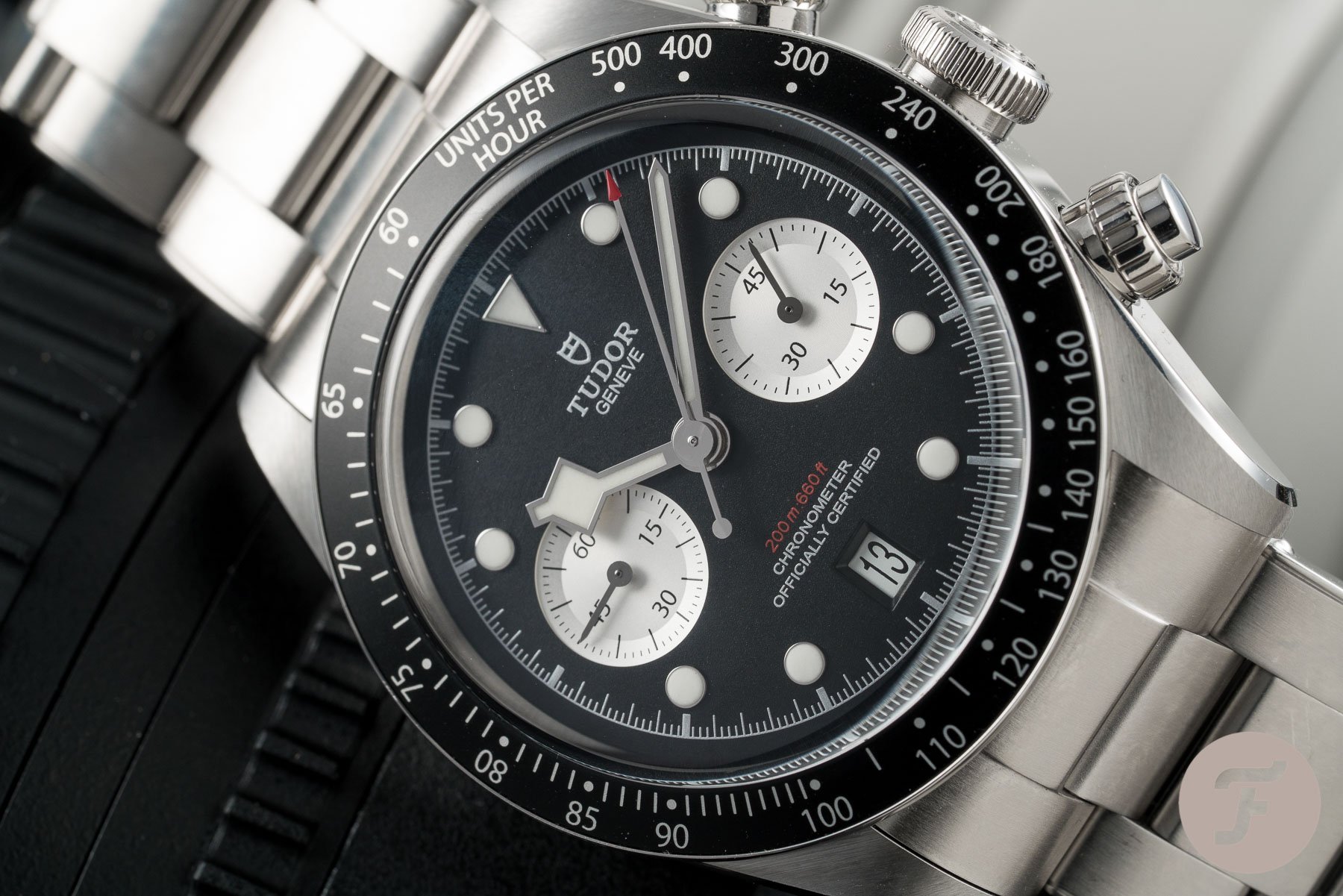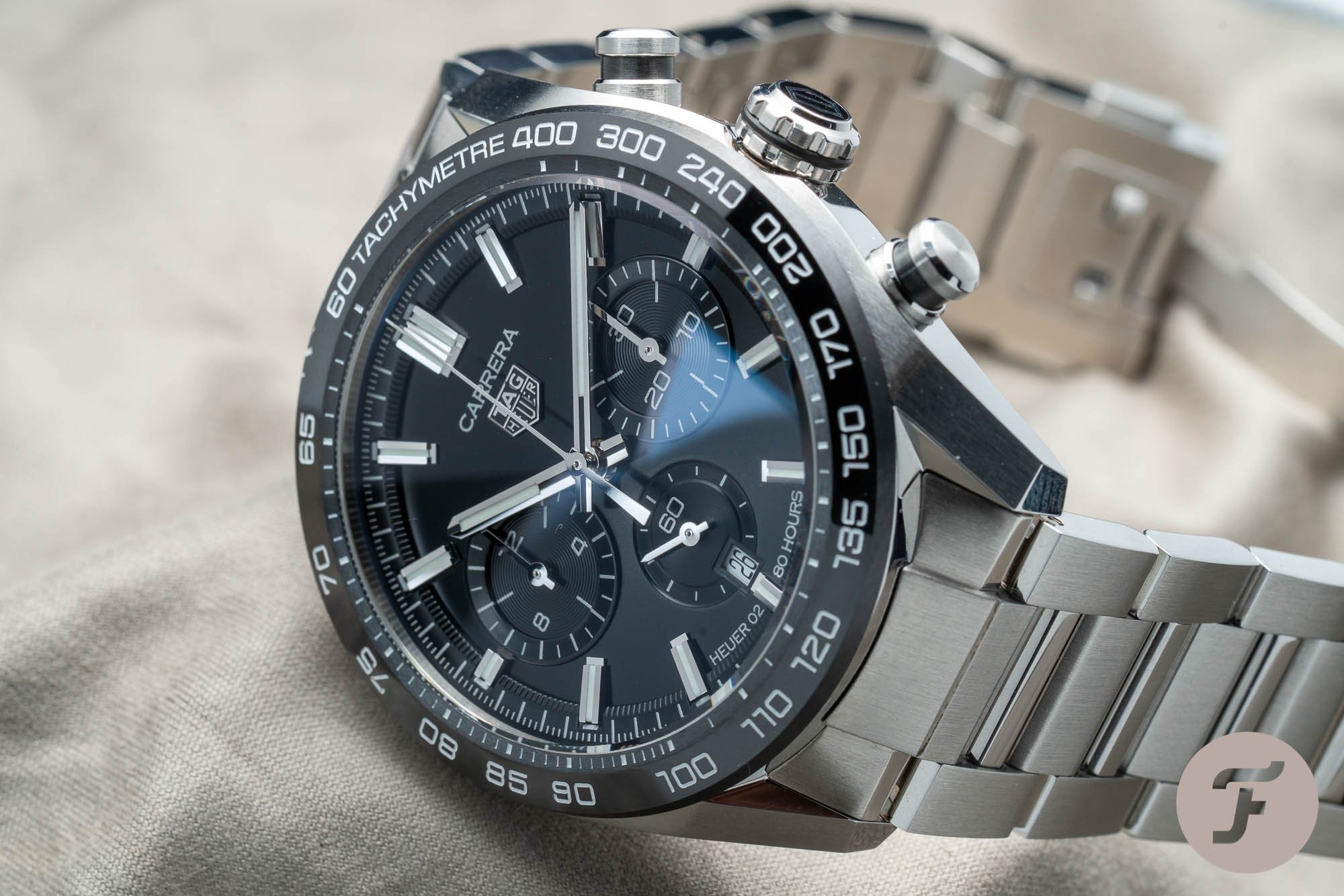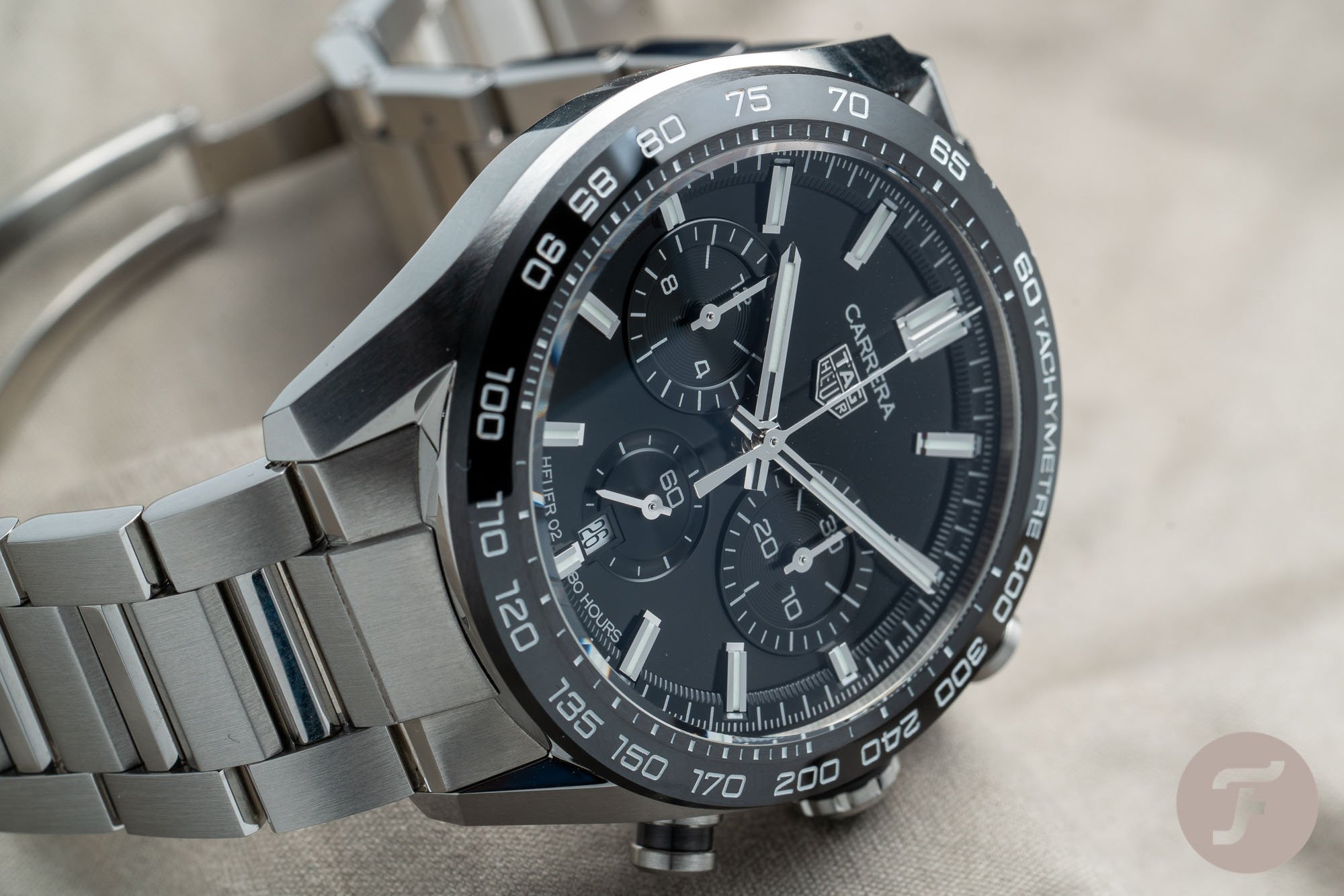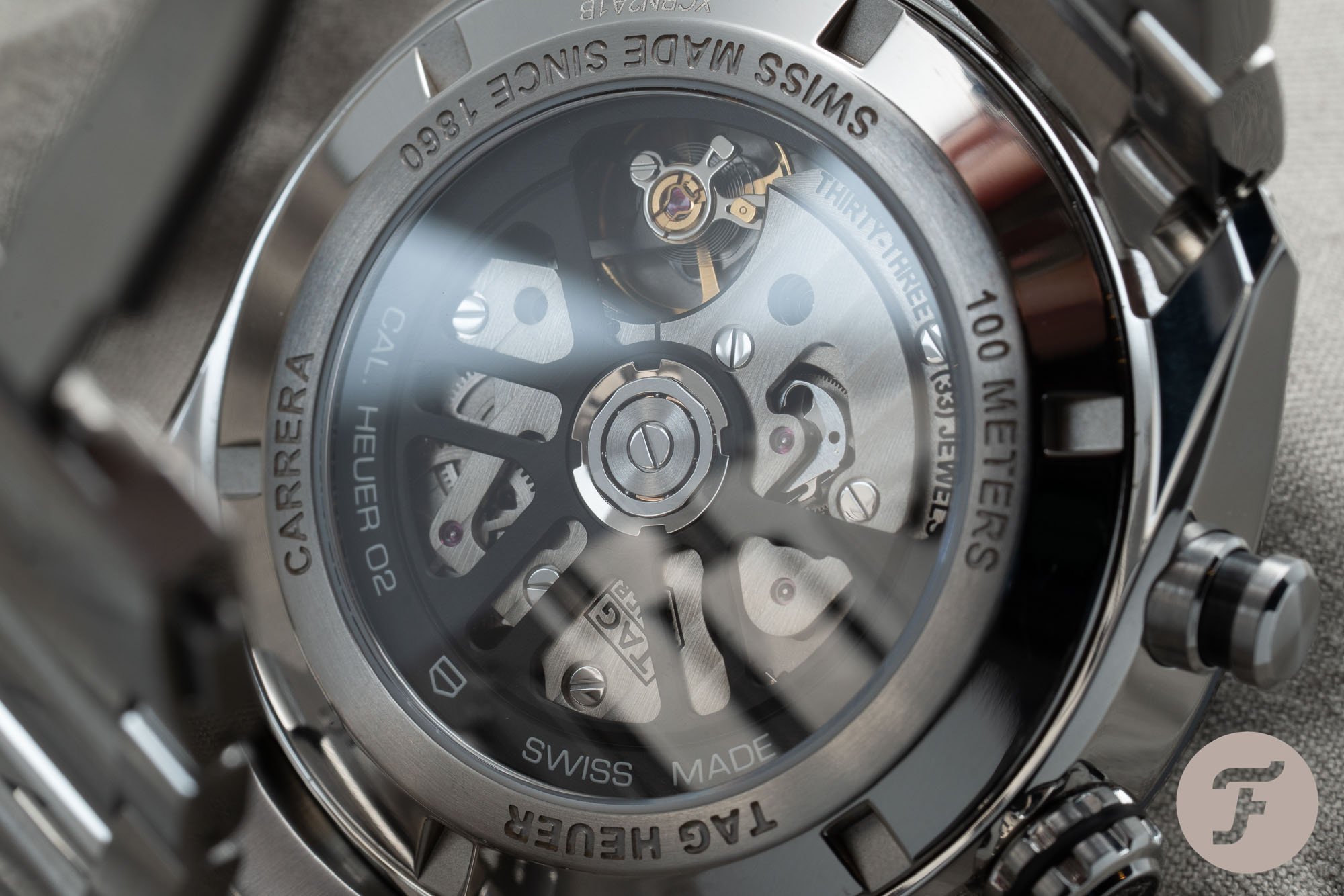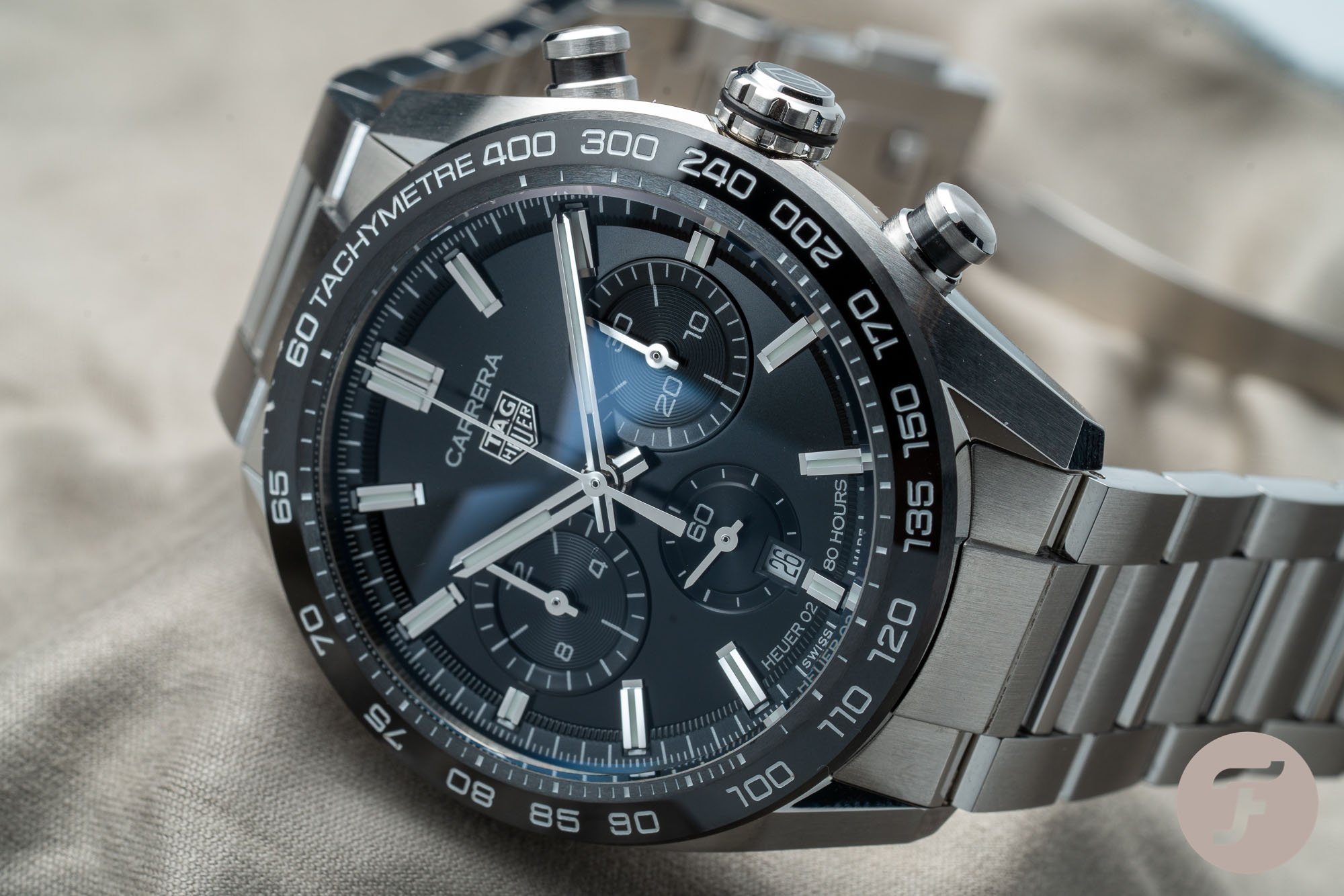Tudor Vs. TAG Heuer: Heavyweights Clash Over Chronograph Superiority
In our Sunday Morning Showdown, two of our writers go head-to-head in an epic showdown for the ages. Strong opinions and hysterical hyperbole are welcome (so feel free to join in with the fun in the comments section below). And don’t forget to let us know which watches you’d like to see torn to shreds/effusively exalted next week. We’ll try and feature as many of our readers’ choices as we can. Grab a hot drink, settle into a comfy chair and ponder whether the new Tudor Black Bay Chrono finally usurps TAG Heuer’s Carrera Sport.
This week continues the trend of pitting a new novelty from Watches & Wonders 2021 against a staple contender. With hundreds of watch releases from 38 brands in a short timeframe, there’s plenty to unpick and assess under the loupe. This week, Jorg selects one of the show’s most highly touted watches — the Tudor Black Bay Chrono panda and reverse panda. It was easy enough to choose the Black Bay Chrono from W&W; however, finding a competitor was not as simple. Zenith’s new Chronomaster Sport was out of the price range, and the panda Omega Speedmaster Pulsometer was an entirely different beast. Yet, an often forgotten brand in the price range of Tudor is TAG Heuer. And this got Ben thinking if Tudor has stolen that proud position that TAG Heuer once held for multiple years. Ben’s choice? The TAG Heuer Carrera Sport Chronograph from late 2020.
A pilot’s paragon
The last time out was the turn of the new IWC Pilot’s Chronograph 41 against the Breitling Navitimer B01 Chronograph 43. The results surprised both our writers as we anticipated an epic showdown between the young pretender and the old-timer. In actuality, the IWC Pilot’s Watch Chronograph 41 took off at a rapid pace, with the Navtimer languishing behind. Imagine Jorg in an F-18 Super Hornet at 64% and Ben in a P-51 Mustang at 36%. While a win for the fuss-free IWC was a distinct possibility, the margin with which it clinched victory over the Navitimer certainly had them scratching their heads. But now, we swap the skies for the tarmac to find out which chronograph sets the fastest lap.
Tudor Vs. TAG Heuer
During the pre-Covid annual watch events, there were always a few standout watches that reverberated around the halls of Basel’s Messeplatz or Geneva’s Palexpo. Yet, despite the remote nature of this year’s Watches & Wonders 2021, there was still plenty of hearsay. Enthusiasts were pretty unanimous that Tudor knocked it out of the park. The Black Bay in 925 silver and 750 gold undoubtedly came out of the left-field — with the existing Black Bay Bronze, Tudor could have itself an Olympic ceremony. More conventionally, Tudor also added two new versions of the Black Bay Chrono. We may have already featured the Black Bay Chrono S&G in the B01 comparison, but these monochrome Chronos elevate the collection to a new level.
TAG Heuer has enjoyed a comfortable slice of the market for some time. Is that time now passed?
The Tudor Chrono’s opponent is the TAG Heuer Carrera Sport Chronograph. The Carrera is one of the cornerstones of the Heuer brand and has seen multiple revisions. Released in the backend of last year, this particular TAG Heuer Carrera attempts to claw back some of its heritage with inspiration from the 1960s Carrera. With a 44mm diameter steel case, ceramic bezel, and in-house developed Heuer 02 movement, the Carrera Sport Chronograph cuts a retro-modern form. TAG Heuer is a well-known chronograph-maker and has enjoyed a comfortable slice of the market for some time. But Tudor’s second wind has indeed taken some of that wind out of TAG Heuer’s sails. Can TAG reclaim the dominance it once had? Over to Jorg and Ben to find out.
Jorg — Tudor Black Bay Chrono
It already feels like a lifetime since W&W, but we’re still feeling the ripples of that show. Tudor’s silver and gold Black Bay Fifty-Eight pair sent shockwaves, but bubbling beneath the surface were the two new Black Bay chronographs. Like many, my mind immediately recalled the Tudor Big Block chronographs spanning from the mid-70s to the ’90s. The Big Block, in itself, drew upon the popularity of the Oyster-case Rolex Daytona. Keyboard warriors can wear their fingertips down to discuss Rolex’s influence on the Tudor Black Bay collection. But for me, the Black Bay offers something Rolex does not produce anymore. And the same goes for the new Chrono. Plus, I have to be honest, I am not a fan of any automatic Rolex Daytona.
Ben: Ow, gut punch, Jorg! I get that there are two distinct eras of the Daytona. But I consider the revamped Daytona case with automatic movement an ’80s design classic.
Jorg: Well, the best Daytona era for me is everything before 1988. And the latest Chrono from Tudor serves as a better reminder of the early ’60s references from Rolex — even more so than the most recent Daytona. Besides the charming looks, Tudor has upped its game in technical development. The Tudor Caliber MT5813 is based on the architecture of the Breitling B01 movement. MT5813 is an automatic chronograph movement with a column-wheel/vertical clutch mechanism and a healthy dose of 70-hours power reserve. The changes from the Breitling movement are the silicon hairspring and 45-minute counter at 3 o’clock instead of 30-minutes.
Get down with the thickness
Tudor reshaped the case to bring the height down by 0.5mm for this latest Black Bay Chrono. To do this, the dial was brought closer to the crystal to achieve a reduction from 14.9mm of the previous Black Bay Chrono models to 14.4mm. Tudor previously did this trick with the Tudor Black Bay GMT, and it works wonders. It also reduces the rehaut space that typically looks empty without any inscription.
Ben: It’s like an empty silo inside the Tudor case. What’s with the massive gap between the minutes and bezel?
Jorg: Space to breathe for the main dial! The contrast from black on white or white on black sub-dials, otherwise known as a panda and reverse panda configuration, symbolizes the early Tudor chronographs. Surprisingly, Tudor did not give us this layout for the first Chrono from 2017, but I’m glad it has now. I’ll be sticking to the black dial Tudor for comparison purposes against your black dial TAG Heuer Carrera. I’ve had the pleasure of trying out both on the stainless steel bracelet. Both were significant chunks of steel, but I was very impressed by how comfortable the Tudor’s 41mm case feels on the wrist despite the 50.1mm lug-to-lug. While the Black Bay bracelet is no Oyster, it punches above the price point with a hint of vintage flair.
Grab this value proposition before Tudor cotton on
That’s where the magic lies with Tudor. The new collection is not overtly vintage-inspired but brings classic design cues with a modern punch for under €5,000. With a list price of €4,920 on a bracelet, this new Tudor offers incredible value for money. While Watches & Wonders indeed revel in the “Wonder” part, especially that jaw-dropping Jaeger-LeCoultre Reverso Hybris Mechanica Caliber 185. It’s pieces like this Tudor that appeal to your regular watch buyer on the high street. Marketing the watch with David Beckham indeed brings a crowd too.
Tudor has found a path in the same spirit as its relative in the Hans Wilsdorf Foundation. This Chrono may not be as shocking as the silver and gold Black Bay Fifty-Eight, but it lands with just as much impact. Tudor may have even underpriced this model as it combines a high-quality movement, recognizable dial, all for a reasonable price. And I’d still rather wear this than the unobtanium Rolex Daytona, and I hope many will agree.
So, to answer the original question, Tudor has deservedly knocked TAG Heuer off its affordable mechanical chronograph pedestal. Yet, Ben thinks TAG has a chance to reclaim this spot with the new Carrera Sport Chronograph. Let’s see how well this goes…
Ben — TAG Heuer Sport Chronograph
Tudor has indeed rained on the (track) parade of TAG Heuer. Fuelled by the passion for motorsport, this once-dominant Swiss brand had a stable slab of the market. It was primarily the €1,000 to €3,000 price range of TAG Heuer appealing to young and seasoned buyers alike. But since 2012, Tudor’s reincarnation into western markets has upended TAG’s mighty force. Jean-Claude Biver’s short-term as CEO did not do the brand wonders with the fiddly Hublot-fication of the cases. Yet, this new Carrera Sport Chronograph just nailed it for me. Gone was the skeletonized modular construction, and left in the wake were a legible dial and a finely cut case.
The faceted outer case still has a level of intricacy but follows the lineage laid down by the original 1963 Carrera with flowing integrated lugs. Also, with piston-style pushers and the lack of crown guards, the new Carrera Sport evokes that sense of tradition that had eluded Carrera’s previous generation. These design features now better showcase the impressive Heuer 02 movement that does not get the love it deserves. A lot of hoo-hah was made by Jorg on the Breitling-derived B01 in the Tudor. But at least the Heuer 02 is developed wholly within a TAG Heuer facility.
A power move
Don’t get me wrong, the B01 is a fabulous movement: It’s rugged, reliable, and in some ways, pleasant to look at too. It’s a shame Tudor hides the mechanism behind an iron wall. So, I suppose we have to trust Tudor on the improvements it applies to its Caliber MT5813. Even so, TAG Heuer develops and produces the Heuer 02, previously known as CH80, in its Chevenez facility. This factory was purpose-built to oversee all steps to manufacture the movement and carry out quality control tests. That’s impressive in itself, and in the Carrera Sport, you can view the fruits of that labor via the sapphire crystal case-back.
TAG Heuer acts as the entry-level stepping stone towards Zenith and then to Hublot.
The fruit is even juicier knowing that Caliber Heuer 02 had a slim fighting chance of existing in the first place. When Jean-Claude Biver took over as CEO of TAG Heuer in 2014, he put the brakes on the CH80 going past the prototype stage. The CH80 movement was barely in its infancy in 2013 before Biver took a dim view on the vast expense needed to create this new base of operations. The CH80’s official unveiling took a backseat to allow Biver to restructure TAG Heuer in his vision. The experimental high-frequency chronographs such as the Mikrotimer and Mikrograph were no longer. The focus was for TAG to act as the entry-level stepping stone towards Zenith and then to Hublot. We even got ungainly smartwatches in this era of flux at TAG Heuer. But one model gave us all hope that TAG Heuer may resume its pioneering CH80.
The tourbillon that brought back the Heuer 02
Tourbillon means whirlwind in French, and the TAG Heuer Carrera HEUER 02T Tourbillon certainly created one. Typically, a refined tourbillon can run you into the six-figure point, yet TAG offered its new Tourbillon at €15k. More importantly, it housed a modified version of the CH80 that came to be known as the Heuer 02. Following this release, a non-tourbillon version powered the Heuer Autavia, then the Monaco. Since last year, the CH80 movement that struggled to get off the ground has subsequently found its way home within Heuer’s most revered collection, the Carrera. All that time and effort was worth it, and now you can own a watch that nearly almost didn’t exist for €5,450.
Getting back to the Tudor Black Bay Chrono, I suppose the main crux of my disappointment with it lies with my hopes for an updated Heritage Chrono. The creative Monte Carlo or Home Plate dials languish while the Black Bay receives all of Tudor’s attention. However, the buzz the new Tudor Black Bay Chrono is receiving is equal parts encouraging and perplexing. On one half, I am pleased to see Tudor hitting its stride after being in the shadow of Rolex for so long. But on the other, I am sensing a trend that possibly exposes why the stock is becoming increasingly hard to come by and, in turn, driving up resale values.
The speculation on the Tudor Black Bay Chrono is misguided.
The scarcity is not down to the lack of supply. Even with the announcement being less than a month ago, I see either version of the Chrono everywhere. Yet, some buyers lust for that early doors adoption that is unnecessary. Yes, there is stock available, but the manufacturing only began in late 2020 at the earliest. The supply needs time to catch up with the demand. Still, buyers are clamoring to get bragging rights to pick up one of the Chronos and to be “first.” That only leads to speculative grey dealers forcing the second-hand value of the Chrono by a 50% uplift in some cases.
- Tudor Black Bay Chrono
- TAG Heuer Carrera Sport
Final Thoughts
Jorg: Just as a coincidence, last week, I published my article on the best Heuer watches from the 1960s. Putting that piece together made me realize how iconic Heuer was back then.
Ben: Likewise, I was talking about Heuer in my Formula One article. It was especially illuminating regarding the technical innovation of Heuer that birthed automated lap timing devices that are still in use in motorsport today.
Jorg: But when I look at this Carrera Sport Chronograph, I cannot make that connection to the original Carrera. The case size of 44mm is the most significant downfall, followed by the 15.3mm case height versus Tudor’s 41mm and 14.4mm dimensions.
Ben: It’s true that that the TAG is a beast on paper. But the shorter lug-to-lug length of 49.2mm compared to the Tudor’s 50.1mm brings things into the wearability zone. According to Rob’s Visual Impact Index, the Carrera maintains a 41.04mm average — more than comfortable.
Jorg: And it’s also the text on the dial, the date window cutting into the sub-register, the huge typeface on the bezel — all these things make it appear a mess.
Ben: To me, it’s the minimalism of the Tudor that exposes its shortfalls. That panel gap from minute markers to the bezel is an eyesore. Also, to me, the sub-registers on the Chrono appear far too small with a date window in no-man’s land. The mixture of dot indices and snowflake hands also derails the visual experience.
Jorg: At least there’s a bit of personality with the Black Bay Chrono. Until such a time that TAG Heuer restores its former glory, I’ll be picking the Chrono over the Carrera every time.
But what do our readers think? Vote now and make your voices heard in the comments below.

